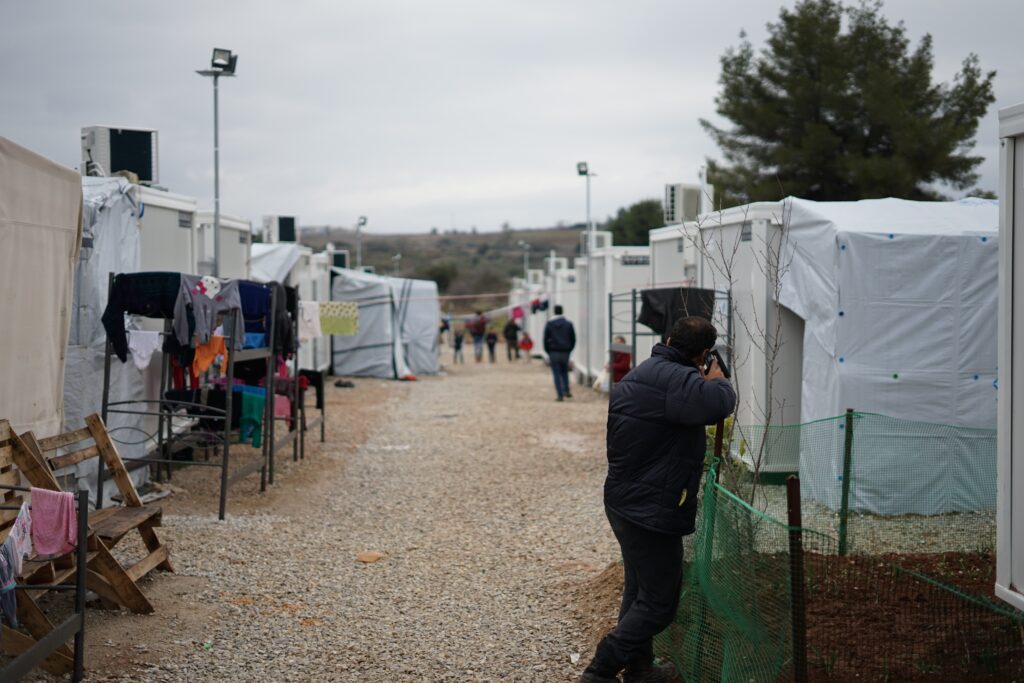Migration Matters: Climate Change & Modern Slavery
When evaluating modern slavery and ESG, we tend to see articles and media focusing on modern slavery as part of the ‘Social’ element and Climate Change as strictly ‘Environmental’. However, when we take a moment to consider the causes and consequences of modern slavery and the challenges facing sustainability in supply chains, this picture becomes much more complex. This blog examines the relationship between modern slavery and climate change and challenges this view of the two as separate issues for categorisation.
First ,we must consider modern slavery trends and the drivers of modern slavery, one of which being migration. People migrate for many reasons, to find work, be closer to family members, and explore new places. In many cases, migration can offer world of new opportunities and prosperity. However, for many migrant workers, particularly those seeking low-paying work in global supply chains, the migration journey is marred with risk of exploitation and abuse. Modern slavery trends indicate that traffickers prey on migrant workers, from unscrupulous recruitment agencies forcing workers into debt to secure roles, to criminals luring migrants with false job opportunities before forcing them into dangerous or illegal situations. Migration is a key focus area for modern slavery policymakers, NGOs, governments, and companies seeking to better protect workers. Understanding the drivers of migration when promoting sustainability in supply chains is therefore important to see where modern slavery risk may lie.


Climate change can cause displacement of people in many ways. Some displacement may be because of a particular event known as a ‘climate shock’, this may be a sudden natural disaster that hits a community and causes an immediate surge of migrants fleeing to safety in nearby places. Examples of climate shocks may include tsunamis, major floods, or hurricanes that are fueled by underlying climate issues. Less immediately recognizable as drivers of migration may be slow-onset climate events. These long-term deteriorations in weather conditions may include rising sea levels leading to community displacements over time or erratic rainfalls leading to unpredictable harvests and famine. Furthermore, such slow-onset conditions can lead to conflicts as groups compete for resources in an increasingly unpredictable and unstable environment. The World Bank estimates that, by 2050, the impact of the climate crisis, such as poor crop yields, a lack of water and rising sea levels, will force more than 216 million people across six regions, including sub-Saharan Africa, south Asia and Latin America, from their homes. This migration is set to become a key modern slavery risk area.
Migrants, particularly those migrating in unexpected or desperate circumstances, are vulnerable to abuse and exploitation into modern slavery situations. They may make risky decisions to cross borders to escape their situation, paying traffickers or taking on debts to reach their destination. Modern slavery trends show that traffickers prey on this vulnerability, deceiving victims into forced labour situations and bringing the under their control through force, fraud, and coercion. There is also risk when people migrate from rural to urban environments, into places and industries that they are unfamiliar with.
One woman, who migrated to Accra from northern Ghana, used to farm until the land was ruined by flooding and she was forced to move. For seven years she has worked as a porter (kayayie), carrying items on her head. She said:
“Working as a kayayie has not been easy for me. When I came here, I did not know anything about the work. I was told that the woman providing our pans will also feed us and give us accommodation. However, all my earnings go to her and only sometimes will she give me a small part of the money I’ve earned.”
The relationship between climate-induced migration and modern slavery is just one area in which these two global issues are interlinked. Many companies and investors invest significant resources into their ESG and modern slavery reporting and metrics. However, the ‘E’ (Environmental) and ‘S’ (Social) are seen as two separate groups of activity. Climate change and modern slavery are intrinsically linked and evaluating supply chain sustainability must take this into account. As the world changes and evolves, so we expect to see modern slavery trends and the relationship between modern slavery and different ESG factors become more intertwined.
Author – Phoebe Ewen
FAQ
-
What are modern slavery risks related to climate change?
-
How does climate change affect companies in terms of the Modern Slavery Act?
-
What are the modern slavery trends now?
-
Is any modern-day slavery training available to alleviate the risk of modern slavery caused by climate change?
-
How can we commit anti-human trafficking caused by climate change?

